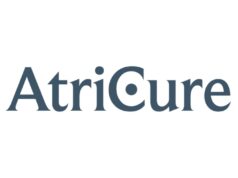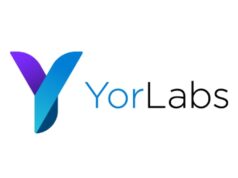
e-Health encompasses the use of information and communication technologies in support of health and health-related activities, including healthcare services, health surveillance, education, knowledge management, analytics, and research. Nico Bruining, Enrico G Caiani, Catherine E Chronaki, Przemyslaw Guzik and Enno T van der Velde, members of the European Society of Cardiology (ESC) Working Group on e-Cardiology, write about the prominent role e-Health is gaining in daily cardiology practice.
Day by day, ‘e-Health’ and in particular ‘e-Cardiology’ applications weave themselves into daily clinical practice. For instance, remote monitoring of patients with implantable devices (eg. implantable cardioverter defibrillator – ICD) allows the continuous monitoring of the health status of these patients at all times. Furthermore, patients themselves have become partners in health and are able to measure various medical parameters and register their health status—eg. blood pressure, glucose levels, heart rhythm—with medical devices, which are connected to their smartphones through health apps. The collected data can then be shared and discussed with their cardiologist. Apart from these examples, most hospitals use electronic health record systems that allow the cardiologist to access information on patients available anywhere in the hospital (and sometimes also outside the hospital). Moreover, data on specific diseases and procedures are registered in nationwide registries providing insights on disease trends and costs.
e-Health is a broad term encompassing the use of information and communication technologies in support of health and health-related activities, including healthcare services, health surveillance, education, knowledge management, analytics, and research. There are several e-Health domains, including: 1) Telemedicine and telecare, 2) Clinical information systems, 3) Integrated regional and national information networks, 4) Disease registries and other non-clinical systems used for education, public health, and healthcare management, 5) Mobile health (m-Health) and Personalised health (p-health), including mobile applications (apps).1
Benefits
e-Health can provide innovative solutions addressing problems in ageing societies, as increasing numbers of citizens live with chronic diseases while health budgets are under pressure and health professionals are in shortage. Arguably, e-Health could also support the strong political drive to move care closer to the patient’s home1 and to empower patients, giving them control and shared responsibility to manage their disease.
Both e-Health and m-Health are already used (or have a potential for application) in practically every aspect of cardiac care such as prevention, diagnosis, risk assessment, monitoring, education, counselling and treatment. For these reasons, interest in e-Health and m-Heath is rapidly increasing. It is estimated that in 2017 50% of smartphone users will have at least one m-Health app.2 The use of such innovative solutions will hopefully restrain the escalating costs of healthcare. e-Health and m-Health are considered not only the first-line but sometimes the only chance for a large number of patients to access professional medical help, particularly in countries with large rural areas and few doctors or nurses.
However, this increasing amount of available data also needs to be interpreted and analysed, which could potentially overload those who need to work on it. Protocols and smart technology are necessary to make sense of the data. In addition, in the field of remote monitoring of implantable devices, various manufacturers implement diverse systems or protocols to communicate and to present their data, therefore standardisation becomes crucial. To address the requirement of integrating remote monitoring data in the local electronic health record system, the IHE (Integrating the Healthcare Enterprise) organisation together with the Institute of Electrical and Electronics Engineers have developed a standard-based transfer of device data between remote monitoring systems and the electronic health record system. All major device companies are actively supporting and implementing this IHE profile (IHE-IDCO), currently in pilot operation in a number of sites.
Mobile health apps
Another development worth mentioning consists of the mobile health apps and wearable devices for health and fitness tracking. Several consumer companies have already brought such lifestyle management tools to the market, like Endomondo, Nike, Garmin, Fitbit, Withings, Samsung, Google, Apple and many others. These apps and connected devices can measure physical activity, blood pressure, ECG, heart rate, blood oxygen saturation and more. Everyone can use these devices to keep track of their health condition. Currently, the general belief is that the main target of these apps and devices is behavioural, evidently nudging patients towards a healthier lifestyle. Classified as consumer lifestyle gadgets, health apps and connected medical devices have the potential to drastically change the behaviour of patients suffering from chronic diseases such as obesity, diabetes, hypertension, heart failure, and other chronic conditions. Shifting focus to patient behaviour and developing a health prevention culture, mobile solutions may also bend down the ascending healthcare cost curve. They might even play an important role in prevention of cardiac and other diseases among the younger generations who eagerly use their smartphones for all kinds of daily tasks. The big question is whether the results presented by these apps and devices are accurate, as most of them are not scientifically and clinically validated. This is the reason why professional certification and perhaps labelling of medical apps and mobile medical devices is in strong demand. The World Health Organization, the Food and Drug Administration (USA) and the European Commission (EU) are the first legal entities undertaking specific actions to define and shape the legal and regulatory framework for e-Health and m-Health. The European Society of Cardiology, and more specifically the ESC Working Group on e-Cardiology, are also involved in this process.
If you are interested in learning more about e-Health and e-Cardiology, and about specific trends and developments, we invite you to attend the upcoming European Congress on e-Cardiology & e-Health, to be held on 29–31 October 2014, in Bern, Switzerland. For more information, visit: www.e-cardiohealth.org
References
1. Cowie MR et al, Eur Heart J 2013; 34:1864–68
2. Lincoln Tsang, Vernessa Pollard and Daniel Kracov, Arnold & Porter LLP. EU and US regulation of health information technology, software and mobile apps. Multi-jurisdictional Guide 2012, see: www.practicallaw.com/3-518-3154.
Nico Bruining is from Erasmus Medical Center, Thoraxcenter/department of Cardiology, Rotterdam, The Netherlands
Enrico G Caiani is from Politecnico di Milano, Electronics, Information and Biomedical Engineering department, Milan, Italy
Catherine E Chronaki is from HL7 Foundation, Belgium
Przemyslaw Guzik is from department of Cardiology – Intensive Therapy, Poznan University of Medical Sciences, Poznan, Poland
Enno T van der Velde is from department of Cardiology, Leiden University Medical Center, Leiden, The Netherlands
About the European Society of Cardiology
The European Society of Cardiology (ESC) represents more than 80,000 cardiology professionals across Europe and the Mediterranean. Its mission is to reduce the burden of cardiovascular disease in Europe.
About the ESC Working Group on e-Cardiology
The Working Group on e-Cardiology (as one of the communities under the umbrella of the ESC) promotes the utilisation of information technology (IT) within the field of Cardiology. This includes IT applications in research and routine clinical practice, both inside and outside the hospital settings.









